Cities in China are among the most heavily surveilled in the world, while residents in cities in the U.S., U.K., U.A.E., Australia and India are also under the eye of a growing number of sophisticated and comprehensive closed-circuit television (CCTV) systems.
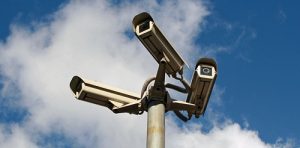
The Video Surveillance and VSaaS Market is expected to exceed more than $70 billion (USD) by 2024. Image: IP Video Surveillance & Vsaas Allied Market Research.
According to analysis by consumer technology researchers at Comparitech in the U.K., Toronto is Canada’s most surveilled city.
Based on publicly available information, including news reports, Comparitech says Toronto is watched by more than 15,000 cameras – that’s like one camera for every 400 or so metroplitan residents.
But there are more cameras on the way, with word of a new multi-million dollar investment in video surveillance technology by the province and the city’s police force.
CCTV systems and surveillance cameras are used for pretty much anything these days, from crime prevention and protection services to traffic and transit monitoring to observing industrial operations in environments not suitable for humans. They watch the weather for us and they watch our kids for us.
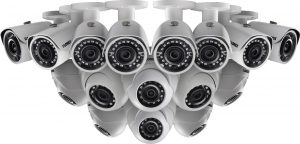
New CCTV systems and surveillance cameras are highly sophisticated tools, with network connectivity, high definition image recording, live video streaming and other features. Image: Lorax Technology.
CCTV cameras are now part of the Internet of Things: they’re network-connected, GPS-tagged and time-stamped. They deliver both live video and recorded images, and new artificial intelligence capabilities mean cameras can enable face recognition, gait analysis and other surveillance activities. Whether it’s a single VGA-type black-and-white camera or a network of tens of thousands of colour cameras delivering encrypted 8K video, they are watching.
While the Comparitech researchers looked mostly at public CCTV – those systems operated by government agencies and police services – there are of course many other cameras in the urban landscape, often privately owned and operated.
And a while a main argument for video surveillance and CCTV system usage is improved law enforcement and crime prevention, Comparitech reports it “found little correlation between the number of public CCTV cameras and crime or safety” in comparisons of number of cameras deployed with reported crime statistics.
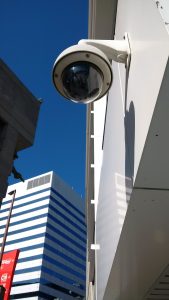
While there is a lack of conclusive evidence that CCTV systems can reduce or deter crime on their own, there is concern that the video surveillance of public places presents a serious challenge to personal and social privacy.
Nevertheless, in response to reports of rising gun violence in Toronto, city officials have announced a new $3 million initiative that will effectively double the number of CCTV cameras currently operated by the Toronto Police Service. The three-year project will see that number go from 34 to 74, the city says, noting that $2 million will be spent on infrastructure and another $1 million for ongoing operational costs.
Premier Doug Ford joined Mayor John Tory in delivering the news about expanding the city’s surveillance network: they explained that “[t]he cameras will act as both a deterrent to crime and aid law enforcement to ensure that dangerous criminals responsible for gun and gang violence are promptly brought to justice.” Chief Mark Saunders did not say where the new cameras would be installed, only that the decision would be “intelligence-led.”
Most researchers and analysts might question that process: there is very little data that suggests CCTV cameras can deter crimes, nor is it evident that cameras genuinely improve safety. The technology may be somewhat useful after the fact, and it may bring benefits for a short while in known crime hot-spots, but there’s little evidence for long-term deterrence and some evidence that surveillance systems may only displace crime rather than prevent it.
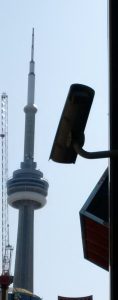
Construction cranes and surveillance cameras: along with the CN Tower, these are among the city’s most common scenes and images.
Former Mayor of Toronto John Sewell is direct in his assessment of the technology: “I’m not aware of any good reports by the police about the effectiveness of CCTV cameras. The idea that such cameras will reduce the amount of gun violence in the city is ludicrous given the random locations of gun use and the fact that CCTV cameras are in fixed locations.”
Sewell is a founding member of TPAC, the Toronto Police Accountability Coalition, which circulates the subscription e-mail newsletter TPAC Bulletin; it has for years reported on the implementation and use of CCTV (as well as in-car and wearable body cams) by the city’s police service.
Back in 2006, for example, the province provided $2 million to fund the initial stages of a CCTV pilot project. During the G20 in Toronto in 2010, dozens of CCTV cameras were deployed and the police wanted to buy some of the used cameras (at $2,000 a pop) after the fact.
Reviewing the anticipated efficacy of such a purchase at the time, the Bulletin reported that Rosemary Gartner of the Centre of Criminology at the University of Toronto concluded from her research that “there is no strong or consistent evidence that the presence of CCTV reduces calls for (police) service.”
Video surveillance of public places does presents a challenge to privacy, to freedom of movement and freedom of association, according to the country’s Privacy Commission, and that is especially true when the surveillance is conducted by police or other law enforcement authorities.
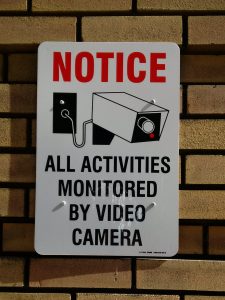
CCTV and surveillance system operators attempts to seek informed consent should include contact information and usage details.
Privacy laws, the Commission reminds us, are very clear about the need to notify people when they are under overt video surveillance, and this includes its purpose and who to contact with concerns. Footage recorded (data captured) by CCTV systems should also be accessible to private citizens in such cases.
That does not always seem to be the case: many cameras in the urban environment are not clearly labelled nor their operators clearly identified.
As the Commission notes, it is “difficult to make sure that signs are visible to everyone and installed in the right places to inform people before, not after, they’ve entered a surveillance zone.”
So there’s a new sign we need to be mounted on the highways into the city: “Welcome to Toronto! You have entered a surveillance zone.”
# # #
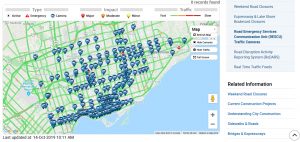
Various CCTV and surveillance cameras networks cover the city: in addition to an expanding police network of cameras, the transportation department operates a network of RESCU traffic cameras. Privately-owned and operated surveillance cameras are not officially mapped by the city.



